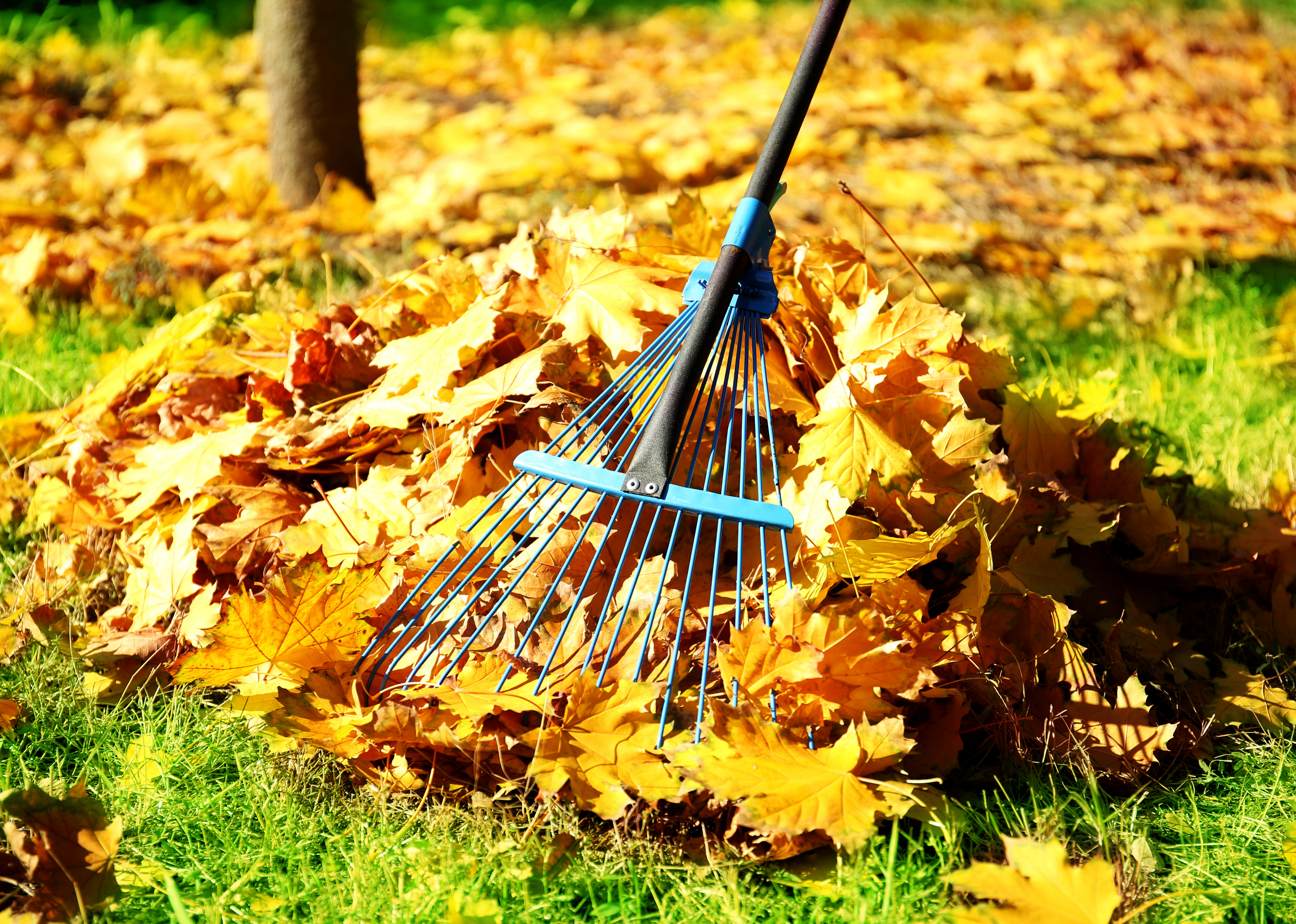Fall Seasonal Maintenance for Rental Properties

This post contains an affiliated link. We may earn a small amount should you purchase our recommended product.
It’s that time of year where the leaves start falling, and there’s a nip in the air each morning and evening. Time to put away the tank tops and pull out the sweaters! For landlords, Fall is the time of year for seasonal maintenance on their rental properties. Here are some reminders on what you or your property manager should be checking out as preventative maintenance:
Inspections
Do a periodic inspection on every unit/property. We schedule one day in November to visit each property, along with our contractor. Generally, we will email all tenants approximately two weeks before the inspection day, describing what we will be checking for in the interior of their unit: water & gas leaks, mold, testing and changing batteries in the smoke/carbon detectors, changing their air filter, checking the heater and thermostat (change batteries), making sure electrical plugs are not overloaded, checking appliances, etc. We also ask them to advise us if they have had any issues to remedy when on site.
To know all the ins and outs of our periodic inspections, read our blog Why Landlord Inspections Are Essential.
If we do not hear back from them one week before the inspection, we send a reminder notice to each tenant. Again, describing what actions we will perform and ask if any issues need our attention. This time we ask them to please confirm receipt of the email and acknowledge acceptance of the inspection. If we do not hear back from them at that point, we begin daily calls or texts to them until we receive confirmation. They could be on vacation or simply busy, but we must have their permission to enter the unit to perform this maintenance.
We plan and advise them two weeks prior, so if the contractor cannot fix any issues, we can arrange for the proper repair person to meet us at the property to correct the problem. Think appliances not working, or rodent or bug issues. Maybe it’s time to get the chimney cleaned or have the HVAC tech check the heater. Generally, it takes a few days to get these tradesmen out, so advanced planning is essential.
For the exterior, we tend to do more preventative maintenance to our rental properties during the Fall than any other time of year. We will perform or oversee the completion of the following tasks:
Clean the gutters and downspouts.
Leaves and muck in gutters can cause them to rust and corrode. Clean the gutters, and then make sure the downspouts are clear by running a hose at high power from the top. We’ve seen pods from trees the size of a golf ball caught in the downspout, not allowing the water to drain. Blockages back water up into the gutters causing it to spill over. Continual water exposure like that can cause dry rot damage to the facia boards at the roofline.
Put away patio furniture or cover and move to a protected area.
This depends on what climate your rental is in and who owns the furniture. For our multi-family, we manage the patio furniture. However, the worst weather we usually get in California is rain, so we remove pads and securely cover them to protect the finish. We also own a single-family rental home in California, but we do not supply patio furniture for those tenants.
Turn off all sprinklers and irrigation.
For cold weather locations, open the water valve to release water caught in pipes if needed. Unless you are in a warm climate like the desert or Florida, most states will not need to run their sprinkler systems during the winter months.
Do you complete Fall seasonal maintenance on your rental properties? After you finish reading, tell us what you do to prepare for the winter months!
Inspect pathways.
Make sure there are not any cracks or raised areas larger than 1/8″. Check gravel and asphalt areas to make sure there are no washed out or broken areas. Inspect stairs for loose nails or steps and make sure the railings and handrails are tight. Adjust timers and make sure the pathway lighting and motion sensors are working correctly.
Make sure there is a plan in place to maintain walkways during freezing weather. Whether you hire a maintenance company to come out on a scheduled basis or write it into your lease that a tenant must manage snow removal, a plan needs to be in place.
Inspect all fire safety components.
Check that the fire extinguishers are secure and in good working order and that the escape plans are easy for tenants to locate, usually near all exits of the building. Make sure all exit lights are on and working. Check that fire escapes are not blocked and work correctly or that the escape ladders you provide are in an easily accessible area within the unit(s).
Make sure to clean all sewer drainage areas of debris.
Leaves and garbage clogging a drainage pipe can cause flooding to your home or basement. Even if this drainage is not on your property but in the public roadway, take a minute to check it out. Municipal agencies tend to get overwhelmed with the first rainstorm and they may not get to it promptly.
Cover or insulate exterior hose bibs in areas with freezing weather.
For our homes in the mountains, we use these outdoor insulated faucet covers. They’re easy to install; simply slip over the valve and tighten the Velcro! They come in different sizes, depending on your application.
Keep cold out.
Inspect all exterior doorways for proper weather stripping, and that windows seal tightly. Maintain exterior window caulking to keep water from leaking through into the windowpanes, down into the wall, or the unit. This issue is a prime opportunity for mold to grow.
Check the roof, chimney, and wood stove.
It’s essential to be ahead of the game on roof leaks. First, look for missing, curled, or damaged shingles. Next, check the metal flashing around the chimney, vents, and valleys for damage. Finally, make sure the chimney cap is present and attached correctly.
If the fireplace is used often, have a chimney cleaning company out to clean soot from the flue, or it’s been longer than three years since the last cleaning. Make sure you can open and close the damper to the flue.
For wood stoves, inspect all components for corrosion, cracks, or loose joints. Toxins can leak out of the stovepipe if these ailments are present. In addition, make sure the wall protection is correctly installed and (if provided) a child-proofing fence is in place.
Inspect trees surrounding your property.
Look for low-hanging or weak branches that could break off and potentially injure someone, block walkways, or bring down power lines in a storm.
Check HVAC units and replace air filters.
Every other Fall, we have our HVAC tech out to inspect the heaters. We have them check for any cracks or corrosion that could lead to carbon monoxide leaks, plus make sure the pilot light is lit and all electrical components are safe. They also check the thermostats to make sure they are functioning correctly.
Although it is stated in the lease that replacing the air filter is the responsibility of the tenant, we do it ourselves. Why? Quite frankly, they never do it. Having a clogged filter can cause the heater or AC to work harder, therefore shortening it’s lifespan. Also, it’s just not healthy to have all that dust matted within the filter that is supposed to be keeping the air clean. Many tenants have no idea that there even is a filter that needs to be replaced! Sometimes the air filter is hard to access as well so it’s just easier to add it to our tasks to complete during inspections.
Finally, we replace the batteries in the thermostat as well. Nothing worse than getting a late-night call that the heater is not working, only to find out the batteries running the thermostat had died! TIP: So you know when the batteries were last changed, use a permanent marker to write the date on the batteries.
Walk the exterior and check for cracks or peeling paint.
Sometimes you do not need a whole house paint job but nipping these issues in the bud early on will keep your future paint maintenance minimalized. If needed, caulk and seal cracks to keep water from penetrating behind siding or trim. If you find peeling paint, sand it and get a good coat of primer on there before touching up.
Also check these items:
- Look at fences to ensure they are secure in the event of strong winds.
- Check that the gas wrench is still attached to the gas meter for easy shut off in case of a fire or leak.
- Inspect sump pumps in basements and under the home to make sure they are cleaned and working correctly,
As you can see, most of the preventative maintenance is for the exterior of the home. Of course, the location of your rental property will make a big difference in the timing of this maintenance. All our properties are in Northern California, so we have a reasonably mild climate. This allows us to wait until November to perform these duties. For landlords in areas with freezing and snowy winter climates, you might want to start this maintenance in late September or early October. Regardless, you won’t want to avoid planning your Fall seasonal maintenance for your rental properties.
We hope you find this guide on how to raise rents without sacrificing a good tenant helpful in your landlord journey. We started Your Landlord Resource for this reason!
Check out our other blogs to guide you on your self-management journey as a landlord:
How to Raise Rents Without Sacrificing Tenants
A Landlord’s Guide To Fire Safety In Rental Properties
Security Deposits: 5 Tips Landlords Should Know
Cash Reserves for Rental Properties, How Much is Enough?
Tips for Taking Great Rental Property Photos
Let’s be social! Follow us on Instagram, Facebook, Twitter, or Pinterest!
Looking for a community of DIY landlords you can ask questions and bounce ideas off? Join the Your Landlord Resource Facebook Group, a discussion group for support, tips, and guidance to help create successful landlord-tenant relationships.
Related Posts
Navigating Unreasonable Accommodation Requests in Property Management
Property management professionals are dedicated to ensuring equal housing opportunities, which includes accommodating the diverse…
May 14, 2024Why Generation Z Is Leaning Into the Renting Lifestyle
Gen Z Grows Up and Moves Out Generation Z, a demographic age group of Americans…
May 14, 2024




Keeping Rental Property Documents Organized - Your Landlord Resource | 16th Nov 21
[…] Fall Seasonal Maintenace for Rental Properties […]